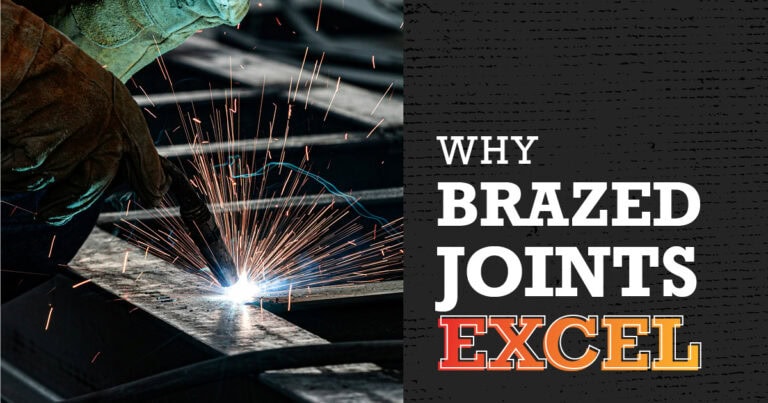Brazing is a trusty technique that melts and flows a filler metal into a joint to join metals—a superior method compared to welding and soldering. Unlike welding, brazing doesn’t mess with the properties of the metals being joined, so you steer clear of distortion and weakening. Unlike soldering, it creates tougher joints that can handle higher temperatures and stress.
To make the most of brazing, you have to understand its key characteristics and fully comprehend the vital traits of a brazed joint so you’re skilled about why brazing matters and how to keep your manufactured products in top-notch shape.
Understanding the Essential Traits of Brazed Joints
To ensure you’re wrangling the best out of brazing, you need to understand its core characteristics. Here’s the lowdown on what makes brazed joints a sturdy choice for your manufacturing needs:
- Strength: A brazed joint done to perfection can be as strong, if not stronger, than the base metals being joined. This strength comes from the metallurgical bond formed during brazing. This is essential in applications needing high strength and reliability, like in the aerospace industry, where brazed joints ensure critical components hold steady under stress.
- Corrosion resistance: Brazed joints often shine with excellent corrosion resistance, especially when you pick the right filler metals. For instance, in plumbing, copper pipes are often brazed with a silver alloy, which not only gives a strong joint but also fights off corrosion, keeping water supply systems safe and sound.
- Thermal conductivity: Brazed joints work to keep excellent thermal conductivity, crucial in heat exchangers and electronic components where efficient heat transfer is a must. A suitable filler metal that matches the thermal properties of the base metals ensures the joint doesn’t become a thermal bottleneck. That perfect match is what maintains your component’s overall efficiency.
- Leak-proof joints: Brazing’s ability to create leak-proof joints is especially important in applications that involve fluids and gases. Take HVAC systems, for example. Brazed joints keep refrigerants from leaking, preserving the system’s efficiency and meeting environmental standards.
- Ductility: Ductility in brazed joints lets them handle mechanical stress and thermal expansion without cracking. This matters in applications where the joint faces vibration or temperature swings, like in automotive exhaust systems. A ductile joint can soak up these stresses, preventing failures.
- Aesthetic appearance: Brazing typically produces joints with a clean, smooth look, which is handy in applications where the joint’s visual quality counts. Jewelry making is a prime example, where the brazed joint’s aesthetic appeal can significantly boost the final product’s value and charm.
- Precision: The brazing process allows for precise control over the joint’s configuration, which is vital in industries requiring high accuracy, like in medical device manufacturing. Precision in brazing ensures joints meet exact specifications, maintaining your product’s functionality and safety.
When you know these key traits, you set yourself up for success.
The Importance of Choosing the Right Partner
Picking a partner who knows the brazing process inside and out is crucial for manufacturers. A savvy partner not only knows the technical aspects of brazing but also understands the specific needs of different applications. This ensures the joints produced are top quality, meeting industry standards and customer expectations while delivering these key benefits:
- Quality assurance: An experienced brazing partner sticks to stringent quality control measures, ensuring each joint meets the necessary specs and standards.
- Cost-effectiveness: Properly executed brazing can cut down the need for costly repairs and replacements, offering long-term savings.
- Innovation and customization: A skilled partner can provide innovative solutions and tailor the brazing process to meet unique manufacturing needs, boosting product performance and competitiveness.
- Technical support: Continuous technical support from a trusted brazing partner can help manufacturers tackle challenges quickly and optimize their processes for better efficiency and productivity.
Grasping these basics and comprehending the key characteristics of brazed joints and why choosing the best brazing partner is vital are essential to produce high-quality, reliable products. By focusing on these aspects, you can harness the full benefits of brazing, ensuring your products’ success and longevity.
